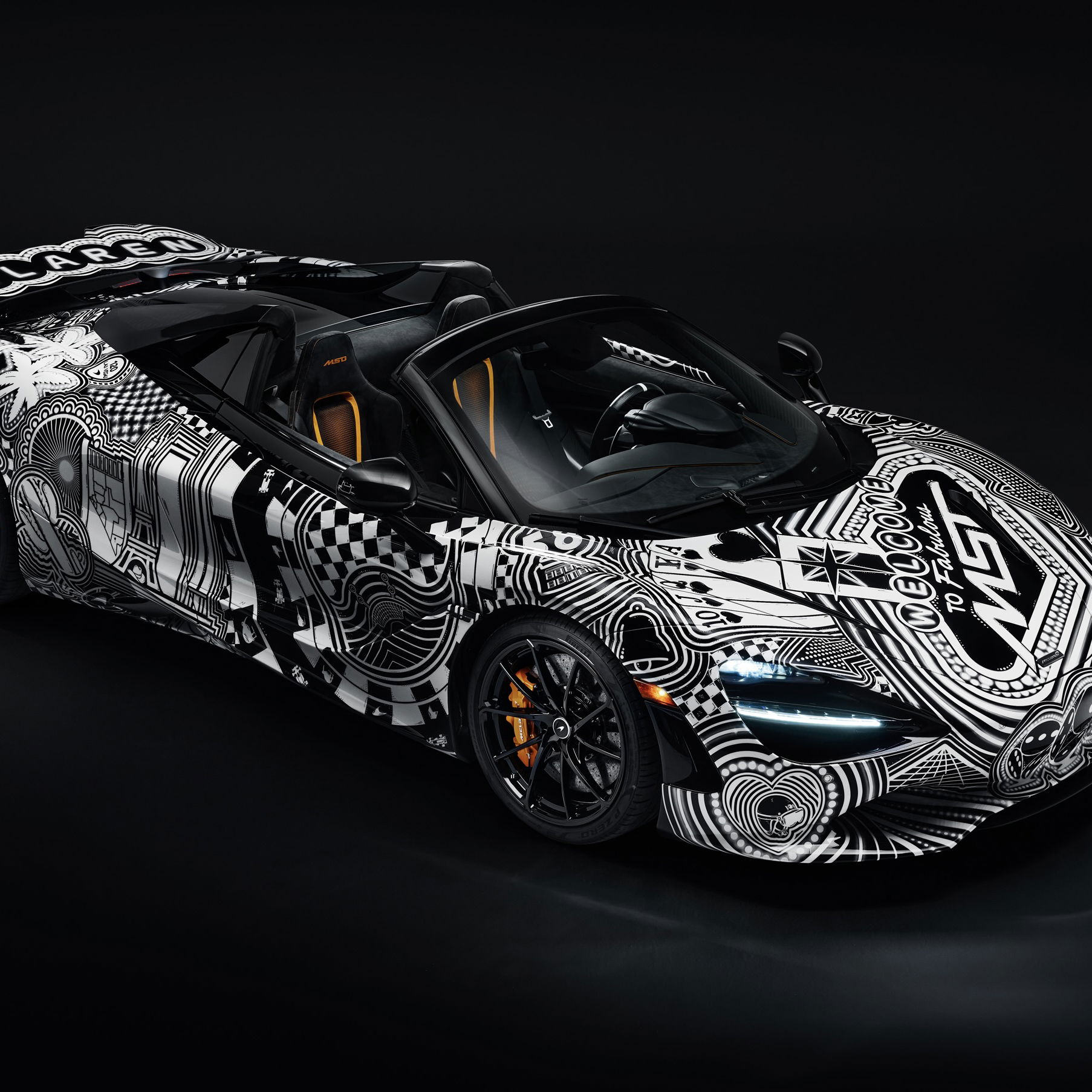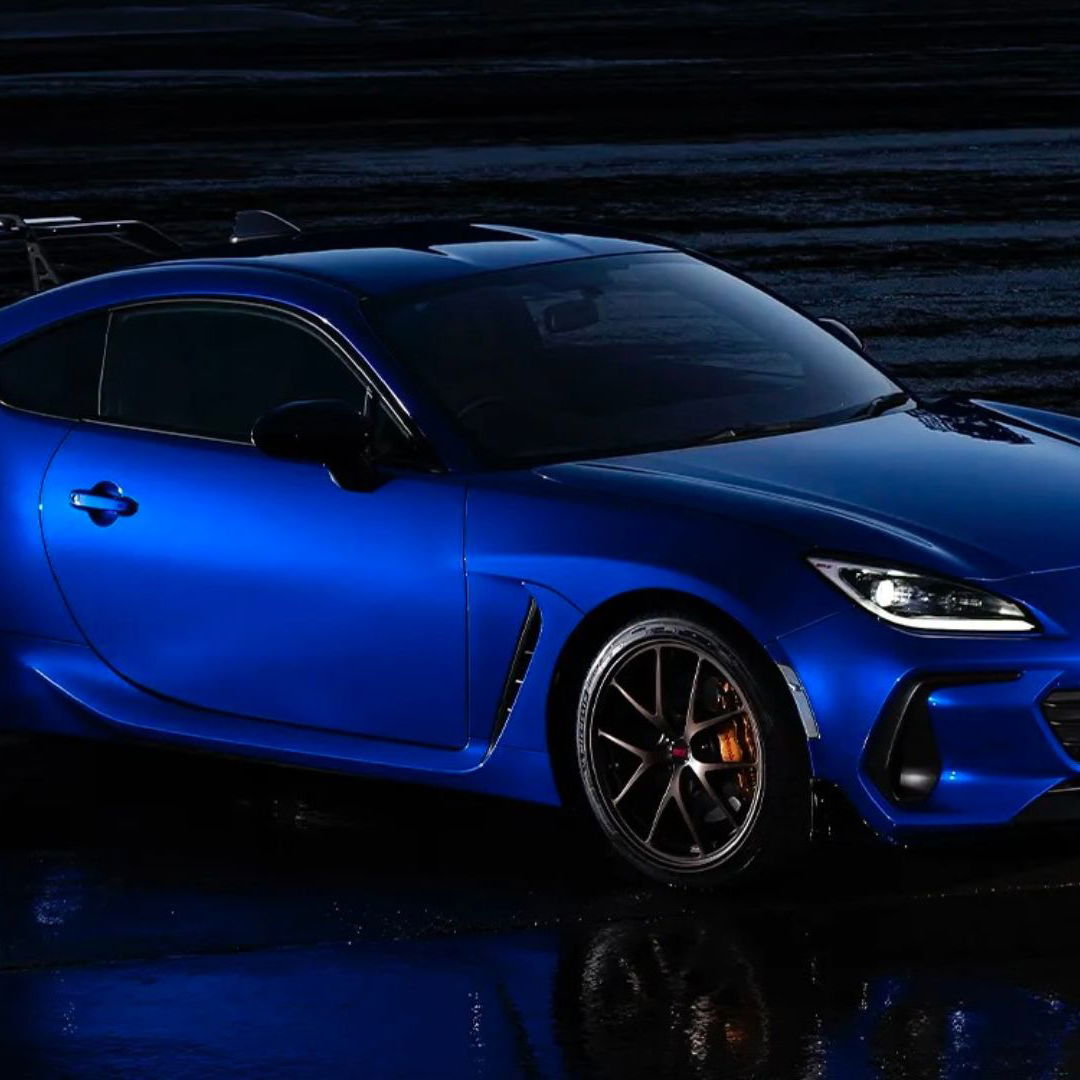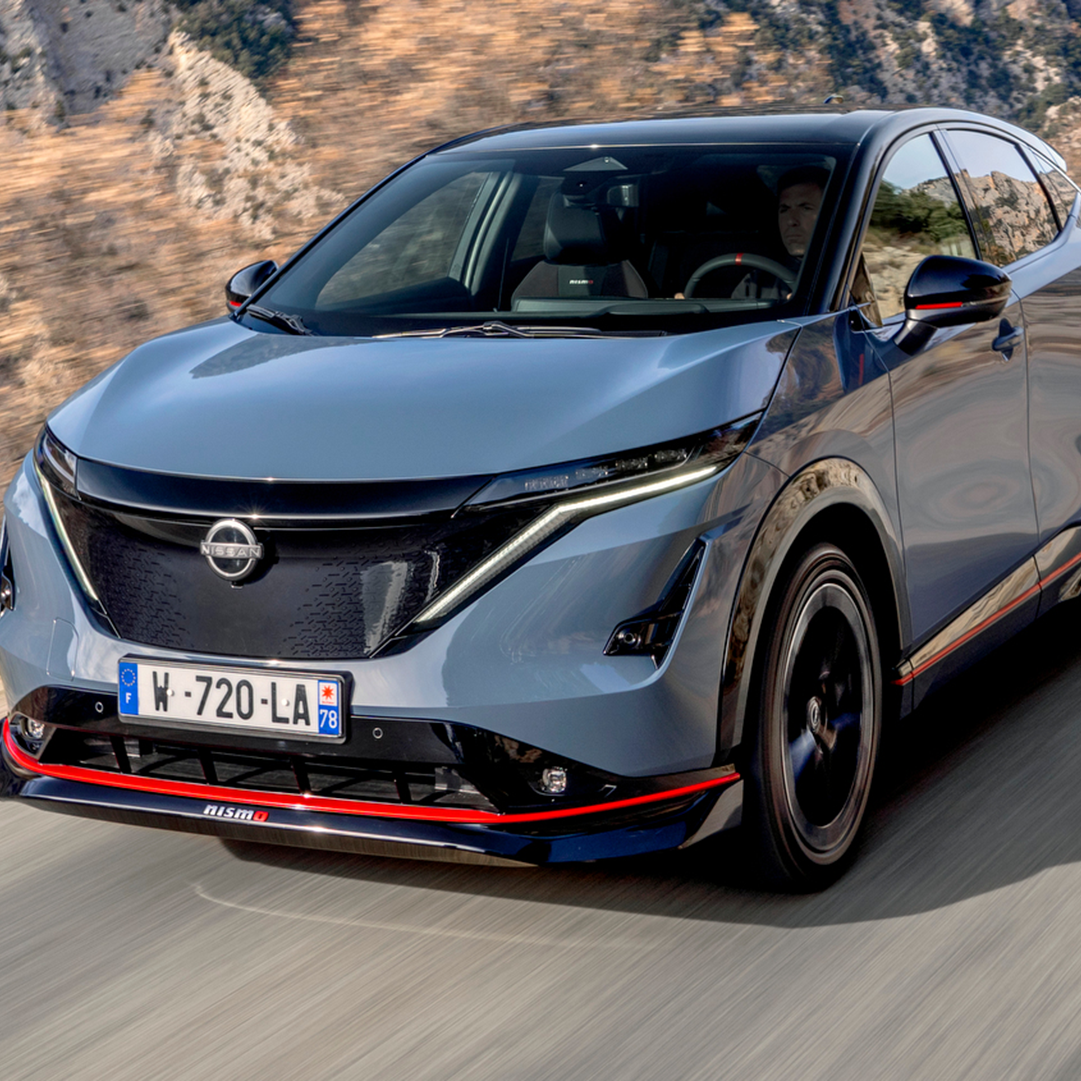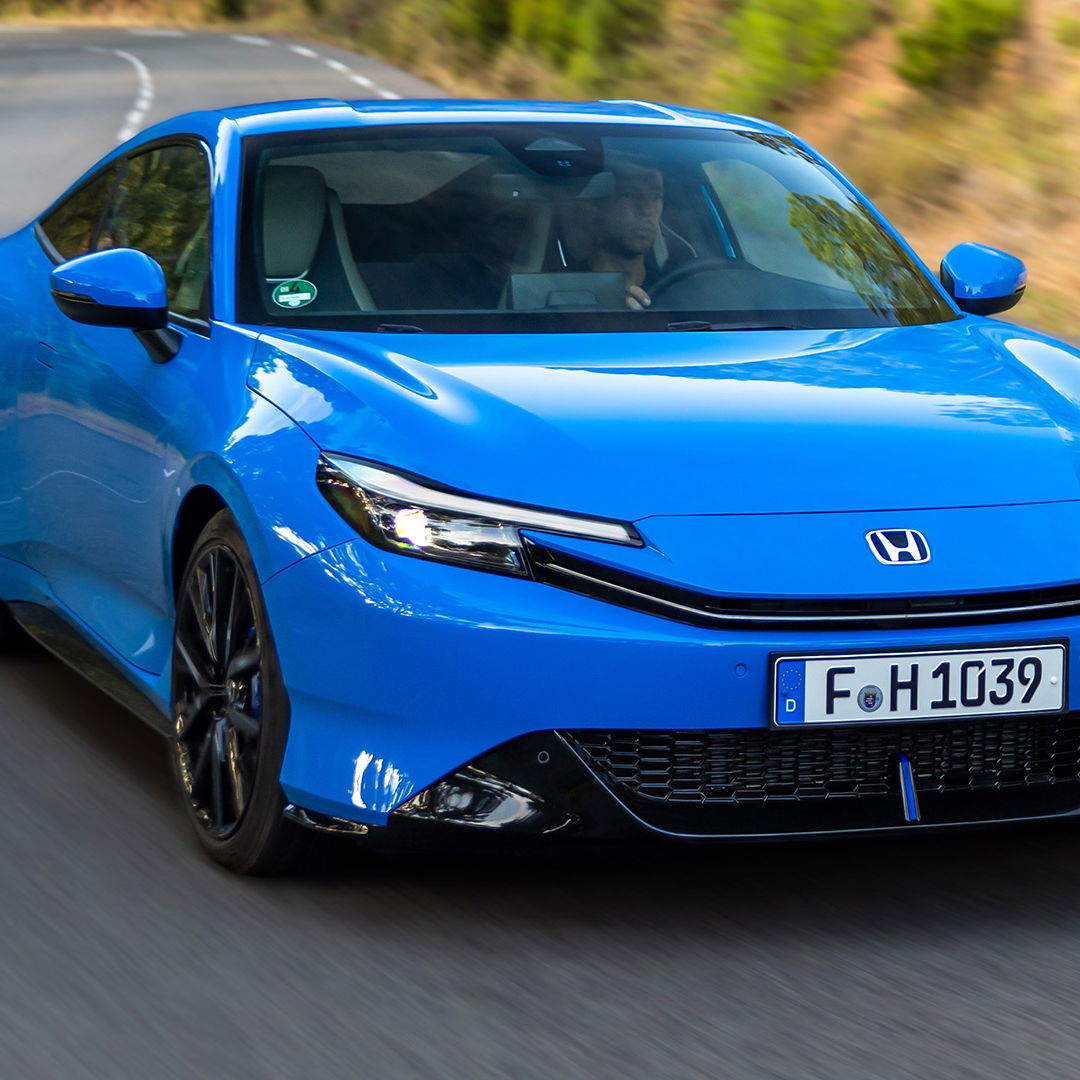The 1994 Penske PC-23B - The Unfair Advantage #BlogPost
In the history of auto racing, there have been only a few cars that have truly been so dominant, that it was deemed unfair. The Brabham BT46B “Fan Car” comes to mind, as goes great cars like the Porsche 917/30 of Can Am fame, Audi 90 GTO in IMSA, the 1988 Ford Thunderbird in NASCAR, the McLaren MP4/4, or the Lotus 72. All of these are great cars in history, but none could be called “dominant.” Not compared to the Penske PC-23. During the Month of May in 1994, it set speed records at Indianapolis, grabbed pole for the 78th Indianapolis 500 and set the preface for the downfall of the most popular racing series in America.
Our story starts in 1993. Roger Penske and Emerson Fittipaldi won the 1993 Indianapolis 500 and two other Championship Auto Racing Teams (CART) races that season. His teammate Paul Tracy won five races at Long Beach, Cleveland, Toronto, Road America and Laguna Seca. However, they missed out on the Championship to the Newman-Haas Lola T93/00 of Nigel Mansell, with Emerson finishing second by eight points and Tracy third by another twenty-six. Penske wasn’t satisfied. Their chassis was great, but a majority of the field ran Lola chassis instead. Only Team Penske, Turley Motorsports, Bettenhausen Motorsports and Arciero Racing used the Penske chassis, while every other team except PacWest Racing and Burns Racing ran Lola’s, with those two exceptions running Galmer 92B’s. However, Penske wasn’t going to just develop a new chassis, but they were going to have a new engine in the car. One incredible engine.
From 1978 to 1996, the Indianapolis 500 was sanctioned by a completely different organization than that of the American Open Wheel Racing (AOWR) series, CART. The United States Auto Club (USAC) had controlled AOWR up until the teams of the series left and formed CART. The USAC Series collasped in 1979 and was regulated to sanctioning Sprint Car and Silver Crown races. Except for the biggest race in the world, the Indianapolis 500. In 1991, USAC changed the rules to appeal to smaller engine-building companies, and permitted “stock-block” pushrod engines to run without production car parts. Pushrod engines were also allowed to have increased turbocharger pressure and an increased engine size comparative to any other permitted engine.
In Late 1993, Roger Pesnke, Ilmor and Mercedes-Benz started testing a new engine that took advantage of these rules. Over the next 24 weeks, Penske, Ilmor and Mercedes would try to find every bit of horsepower they could out of the engine. The power they would find, was unholy.
Penske and Ilmor spent months developing their engine, the 265E, at their shop in Reading, Pennsylvania. Engines were run until they broke, exposing their weak spots. Week after week, after week, after week. They wanted an engine that would run 500 miles, but by December, they could barely get it to run period. Penske’s development continued on their PC-23 chassis alongside the engine, making sure it would fit for Indy. As December continued, the engine was almost ready for testing.
In Mid-December 1994, their test mule was ready. At a freezing, snowy day at the five-turn Nazareth Speedway in Pennsylvania, 1992 Indianapolis 500 winner Al Unser Jr. took the PC-23 test mule out for the first time. The track was a thin strip of asphalt surrounded by feet of snow, and Unser only ran 150 miles, but the engine stayed together. It was considered a sucess. However, Nazareth was the hometown of both Mario and Michael Andretti, who would both drive in the CART Series and at Indianapolis with Cosworth power. Years after the fact, Mario acknowledged that he heard the Ilmor testing, as he only lived about a mile from the track, but shrugged it off and ignored it. That would be a mistake.
Although Nazareth was close to the Penske shop, and it was owned by Roger Penske, the track was a flat, .91 mile oval that required patience with the throttle. Indianapolis was fairly flat, but it was a 2.5 mile behemoth. Penske would have to use another track he owned for testing. Michigan International Speedway would be that track, but it was hundreds of miles from the shop and in a deep freeze. Worse still, there were only five months until Indy.
Test after test, after test, after test was held at Michigan. And test, after test, after test, the engine didn’t make it all 500 miles needed. Months went by, Unser and Paul Tracy pushed the car to their limit at Michigan. Each engine lasting longer and longer. First 200 miles, then 300, then 400, then progress started to slow. The early part of the spring was spent trying to get to the magical 500 miles, but no matter what, it seemed impossible.
Penske waited until late-April to show the newly designed PC-23 to the public. The car differed in several ways to the normal PC-23. Due to the increased size of the engine, a taller engine cover was added to the car. The rear wing was also shortened for less downforce on the long straightaways of the Indianapolis Motor Speedway. Tracey, Fittipaldi and Unser Jr. were ready for one of the most important races in the history of motorsport.
When practice opened on May 7th, 1994, the skies did as well. Practice was rained out the first day, and all six Penske prepped cars set in there garage, not able to go out on track, just collecting dust. On May 8th, Paul Tracey was the first out on track in the PC-23B, the first factory backed Mercedes car at Indianapolis since 1923. Tracey drove three cars that day, his primary car, Unser’s primary car and Unser’s backup car. Unser was “working on reliability” at Michigan again. Tracey’s fast time that day wasn’t anything special, only managing a lap of 220.103 mph, seven miles per hour off Scott Brayton in a Menard Buick, who ran a lap of 227.658 mph.
In Michigan, the most important test of the saga was underway. Unser finally hit 500 miles on the engine, 520 to be exact.
Meanwhile in Indianapolis, Emerson Fittipaldi drove with the 500I engine in the car for the first time. Emerson described the engine as completely different. The torque curve was different and it took a few hours of practice to get used to, but Emerson adapted perfectly by the end of the day.
The following two days, a Penske car ended practice second on the charts both days. May 9th, Fittipaldi ended practice second behind Michael Andretti. Unser also took his first laps on the same day. On May 10th, Tracey ended the day second, behind Raul Boesel, who broke the 230 mph barrier for the first time since 1992. This was aided by a solar eclipse, which cooled the track temperature and produced some of the fastest speeds of the month.
With these fast speeds, the claims of Penske sandbagging were endless. Among these claims, Nigel Mansell spoke the loudest, claiming Penske was only using 50 inches of boost to have something left for pole qualifying. If Penske was found to be as fast as many thought they were, it was all but a guarantee USAC would tone down the boost on the Penske cars. Penske also made sure to leave all engine power data off their press releases. In reality, the engine was already dyno’d, and it made 1024 whp. Almost 200 horsepower more than anyone else in the field.
However, Penske wasn’t sandbagging. Due to the larger sized engine, it had to be fitted asymmetrically. This led to some odd handling characteristics through the corner that the drivers were struggling to get used to. The car was blistering down the straightaways, with both Paul Tracey and Emerson Fittipaldi hitting a trap speed of 245 mph on Thursday, May 12th, but it was a nightmare in the corners. None of the Penske drivers seemed to be able to tame the car, as the nose would lift under power, causing massive understeer. On Friday, Paul Tracey found this out the hard way. At 3:37 p.m., Paul Tracey hit the outside wall in Turn 3, before spinning back across the track and hitting the inside wall. Tracey suffered a concussion and had to sit out the first weekend of time-trials.
Rain set in early on pole day, May 14th. The first car didn’t hit the track until 12:15 p.m. At 12:50 p.m., Raul Boesel took provisional pole position with a four-lap average of 227.628 mph. At 1:18 p.m., it was time for the first Penske car to go out, Al Unser Jr. On the first lap, Unser hit a speed of 225.722 mph. Not even close to good enough. The second lap, Unser put his foot down. He hit 228.351 mph, bringing his average up to 227.036 mph. The crowd, 200,000 strong, cheered. On the ABC telecast, Paul Page cheered with disbelief. In these weather conditions, a lap that fast seemed impossible. On his third lap, Unser hit a trap speed of 237.5 mph going into Turn 3. He crossed the line and the next lap came up on the scoreboard, 228.525 mph. The crowd cheered again! It was a remarkable run. Paul Page and Bobby Unser were on the edge of their seats in the booth. His average was now 227.533, only a tenth of a mile per hour off Boesel. The checkered flag waved and the crowd went ballistic. The last lap: 229.481 mph. Paul Page screamed on the broadcast, “229! 229.481 Miles Per Hour! Al Unser Jr. is on the pole provisionally!” The run stuck, and Unser was still on the provisional pole at the end of the day.
However, Mario Andretti, in his final 500, and Emerson Fittipaldi weren’t able to qualify due to the late start, but on the next day they still weren’t able to surpass Unser. Fittipaldi did qualify third, allowing for there to be two front-row Penske starters for the 500. Paul Tracey struggled to get used to the PC-23, and qualified 28th in Al Unser Jr.’s backup car.
After the first weekend of qualifying, people started to fall out of the field. On Tuesday, Al Unser Sr. announced his retirement, as he couldn’t figure out how to get his car up to speed. Johnny Rutherford also retired before the second weekend of qualifying, taking one final lap around the speedway, much as A.J. Foyt had done the year before.
The same day Unser Sr. announced his retirement, Unser Jr. was sick, and missed a vital day of practice. The rest of the week, the only laps that were made by the drivers were the fastest. Fittipaldi was fastest from the 16th to the 19th, and it wasn’t until May 21st that the primary cars were brought out again, and it wasn’t for anything more than a shoot for ABC’s coverage of team Penske.
The last week before the race, there is traditionally only one day of practice. Carb Day. The last day of practice before the race. It was a disaster for Penske. Only two cars went out, finishing the day third and tenth, with Mario Andretti setting the fastest speed. Unser struggled with the setup on his car, bringing in some of Fittipaldi’s engineers to dial in his car. To add on, during a teardown of one of the backup engines, bad piston rings were found. And to top it all off, Mansell again was starting up the sandbagging talk again, pressuring USAC to implement a last minute rule change. However, they wouldn’t, and Penske was still allowed to race with what they had.
Race day in Indy was beautiful, clear skies in the mid-70’s. At 10:52 a.m., the command was made to start the engines. Eight minutes later, the field took the green flag. They quickly came out of their three wide formation, as Unser and Fittipaldi’s Penske’s shot away, having a commanding lead by Turn 1. The cars handled perfect, and Unser led the first twenty-three laps, and Fittipaldi leading the next thirty-eight. Soon, competitors dropped by the wayside. Mario Andretti dropped out on Lap 23, Scott Goodyear on Lap 29 and Adrian Fernandez on Lap 30. After a rash of early yellows, the race went green from lap forty-one to ninety-one, allowing Fittipaldi and Unser to destroy the field.
By Lap 85, Fittipaldi stretched his lead over Unser to 24.6 seconds, and had lapped the entire field expect Unser. On Lap 92, a four car pileup took out Nigel Mansell, another contender, and saw Al Unser Jr. barely escape. On the same lap, however, Paul Tracey coasted down the pit lane, and retired from the race. Everyone in the Penske camp was then one edge, could the mechanical gremlins strike Unser and Fittipaldi?
During the second half of the race, it was all Fittipaldi’s to lose. The only non-Penske car to lead was Jacques Villenueve, who inherited the lead after Fittipaldi pitted to clear a plastic bag off his radiator, and Unser pitted for fuel. However, he was overwhelmed by both cars shortly after. A long stretch of green-flag racing continued after this. Fittipaldi and Unser soon lapped the field, and Fittipaldi had a 40 second lead on Unser. It was his race to lose.
With twenty-five laps remaining, all Fittipaldi needed was a “splash-n’-go” fuel stop to make it to the end of the race, and with the gap he had on Unser, he could make the stop without losing the lead. His team scheduled the stop for Lap 194 of 200. With twenty laps remaining, he lapped Unser, making Fittipaldi the only car on the lead lap. After jockeying for seven laps, Unser unlapped himself on Lap 183. Emerson still only had to bring it home.
Coming out of Turn 4 on Lap 185, Fittipaldi was closely following Unser, to the point where he could not see the rumble strips on the bottom of the corner. Fittipaldi clipped it with his left front tire, causing the car to lose grip. He tried to correct, but it was too late. Fittipaldi slammed the wall and coasted across the line with broken suspension. After leading 145 laps, Fittipaldi would not get his third taste of Indy glory.
This incident left Unser Jr. and Villenueve as the only cars on the lead lap, but Unser had a plethora of cars between him and Villenueve, and when the race restarted on Lap 190, it was smooth sailing. When Stan Fox crashed on Lap 196, the cleanup would end the race, and Al Unser Jr. became a two time winner of the greatest race in the world.
However, the story of the PC-23B and 500I doesn’t end there. After the race, USAC and CART both evaluated the situation surrounding the engine. USAC initially were going to allow pushrod engines in 1995, but were concerned about the smaller teams getting eaten up by the costs. CART still refused to allow engines with increased boost at the events they held, rendering the engine useless for their events.
Two weeks later, USAC announced that for 1995, pushrod engines would only be allowed 52 inches of boost, down from the 55 allotted in 1994. Other engine manufacturers, including Cosworth, were considering buying 209ci pushrod engines for the next year’s race, and Ilmor had already started work on thirty new engines for 1995. Hulman and Company, the Indianapolis Motor Speedways owners took note, and became worried about increasing costs. On August 11th, 1994, USAC announced further restrictions on the engines, limiting them to 48 inches of boost for 1995, and rendering them practically useless. Teams cancelled their orders, and Ilmor was out 1 Million dollars. Penske was left unprepared for 1995, and they couldn’t find a good engine for the PC-24, the 1995 car. Both Unser Jr. and Fittipaldi were not fast enough to qualify for the 1995 Indianapolis 500.
This left Roger Penske, a co-owner of CART, and Tony George, a voice in USAC, in an adversarial position. And, in the Summer of 1994, Tony George, owner of the Indianapolis Motor Speedway, announced a new American Open Wheel Racing Series, the Indy Racing League, which would start in 1996. This split American Open Wheel Racing into two separate series, and the infighting destroyed both. Both IRL and CART saw dwindling crowds throughout the late 90’s, while NASCAR rose in popularity, leaving the tattered remains of what was once the most popular motorsport in America in its wake.
American Open Wheel Racing continued this infighting from 1996 on for 12 years. Despite CART’s bankruptcy in 2002 and bailout by Champ Car, the war continued until 2008, when Tony George and Kevin Kalkhoven of Champ Car decided to merge in the IndyCar Series we have today. IndyCar hasn’t recovered to its popularity it once held, but it is growing thanks to international and domestic exposure from new CEO Mark Miles, and interest from other drivers, such as Fernando Alonso and Kurt Busch. However, it isn’t the same sport it once was, and it’s all down to one car, and one loophole.
This is just a recap of what happened with the PC-23B, if you would like to know more about it, please buy Jade Gurss’ book, Beast, it is a much more detailed took about this car and is a highly enjoyable read.












Comments
i can safely say that 95% of my indycar and CART knowledge comes from you. i saw the “slower” PC-22 at goodwood and it was just ridiculously fast.
YESSS, i ve been waiting for someone to make an article on this beast forever, thank you
Another great read about another great car
Great post. Love these types of cars. They-re fascinating to learn about, that’s for sure.
(You’re bio is hilarious; I can’t tell what’s true and what’s not true.)